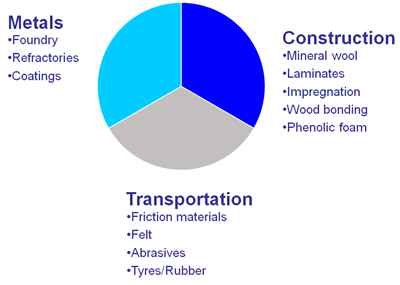Phenolic resins are a type of synthetic thermosetting resin invented by Dr. Leo Baekeland in 1907, and the material was originally called Bakelite. This was effectively the first plastic to go on sale and was typified by the old style black telephones.
Phenolic resins are divided into two different types:
- Novolacs Not reactive, need addition of a cross linking agent to fully polymerise
- Resoles Self curing, contains reactive groups
General properties
- High temperature stability up to 300-350°C
- High water and chemical stability
- Often dark coloured (yellow to dark red)
- Excellent price/performance profile
Why use Phenolic resins
Phenolic resins are one of the most versatile polymers yet invented, and whilst they were at the very start of the Age of Polymers, they continue to be developed into more and more applications.
Phenolics are characterised by
- Simple to use
- Versatile range of curing properties
- Cured resin has high heat resistance
- Cured resin has high resistance to chemical attack
- Compatible with many fillers/fibres
- Cost effectiveness
- Global availability
In the modern world, Environment, Health and Safety has become a critical factor in choice of materials. Phenolics have:
- Extensive history of usage leading to in-depth expertise and optimisation of methods of safe use.
- Long established raw materials
- Phenol
- Formaldehyde
Applications

